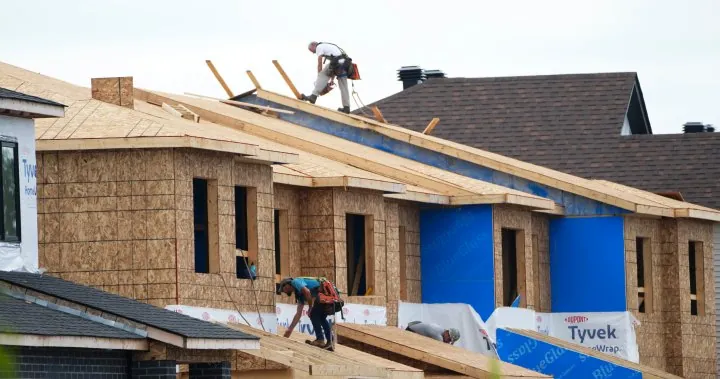
Canada’s Housing Market on the Brink: Record Home Starts but Affordability Still Out of Reach!
2024-09-26
Introduction
In an insightful report released by the Canada Mortgage and Housing Corporation (CMHC), the first half of 2024 showcases a remarkable surge in homebuilding activity, particularly in Canada’s six largest cities. A staggering 68,639 housing units commenced construction, marking a 4% increase compared to the same period in 2023 and the highest levels witnessed since 1990, trailing only behind the first half of 2021. However, experts raise a crucial question: is this surge enough to alleviate the crippling housing affordability crisis that many Canadians face today?
Regional Disparities and Emerging Trends
The report highlights significant regional variances in construction activity. Calgary, Edmonton, and Montreal experienced a boom in housing starts, with increases between 40% to 70% year on year. This can be attributed to robust interprovincial migration, as an influx of residents has driven up demand for new homes in these cities. Calgary, in particular, has reached record high construction levels, while Edmonton is not far behind with its second-highest figures ever recorded.
Conversely, cities like Toronto, Vancouver, and Ottawa saw a decline in housing starts, dropping between 10% to 20%. These spatial discrepancies reveal a complex landscape within the Canadian housing market.
A Glimpse at Population Dynamics
Despite the encouraging figures, CMHC warns that the current pace of construction is insufficient to keep up with Canada’s rapidly expanding population. With recent Statistics Canada data revealing a population boost of around 250,000 in just the second quarter of 2024, the housing supply is tightening further.
Historically, Canada has maintained an equilibrium of one new dwelling for every two new residents for over 30 years; however, that ratio has recently fallen to one dwelling for every three residents, suggesting a worrying trend that could hinder future affordability.
Government Initiatives and Future Prospects
In response to this ongoing crisis, the federal government has rolled out several new policies aimed at stimulating housing construction, with a goal to build nearly four million homes by 2031. Among these strategies are incentives for municipalities to increase density and speed up building permits, particularly for purpose-built rental units. Notably, nearly half of the new apartments constructed in major cities were designated as purpose-built rentals, the highest share ever recorded.
Yet, condo developments faced a downturn, largely due to a waning interest from homebuyers and investors, driven by rising interest rates. Experts predict that this trend may persist, making it increasingly difficult for developers to gather the necessary sales to break ground on new projects.
Looking Ahead: Economic Indicators and Market Reactions
In light of proposed federal measures to extend 30-year amortization periods for new builds, officials are optimistic about making homeownership more achievable. However, some experts caution that while these moves may act as a short-term solution for affordability, they could inadvertently inflate home prices as demand increases.
The overall atmosphere in the housing market is beginning to stir, with analysts citing recent improvements in affordability, thanks to declining mortgage rates. However, TD Bank economist Rishi Sondhi has pointed out that fundamental issues remain unresolved. He forecasts that while immediate spikes in housing market activity may not manifest until 2025, the anticipated loosening of mortgage conditions and potential interest rate cuts could unlock significant growth in sales and home prices across the country.
As Canada navigates this tumultuous period in its housing landscape, the road to affordable living remains a complex and multifaceted challenge.









 Brasil (PT)
Brasil (PT)
 Canada (EN)
Canada (EN)
 Chile (ES)
Chile (ES)
 España (ES)
España (ES)
 France (FR)
France (FR)
 Hong Kong (EN)
Hong Kong (EN)
 Italia (IT)
Italia (IT)
 日本 (JA)
日本 (JA)
 Magyarország (HU)
Magyarország (HU)
 Norge (NO)
Norge (NO)
 Polska (PL)
Polska (PL)
 Schweiz (DE)
Schweiz (DE)
 Singapore (EN)
Singapore (EN)
 Sverige (SV)
Sverige (SV)
 Suomi (FI)
Suomi (FI)
 Türkiye (TR)
Türkiye (TR)